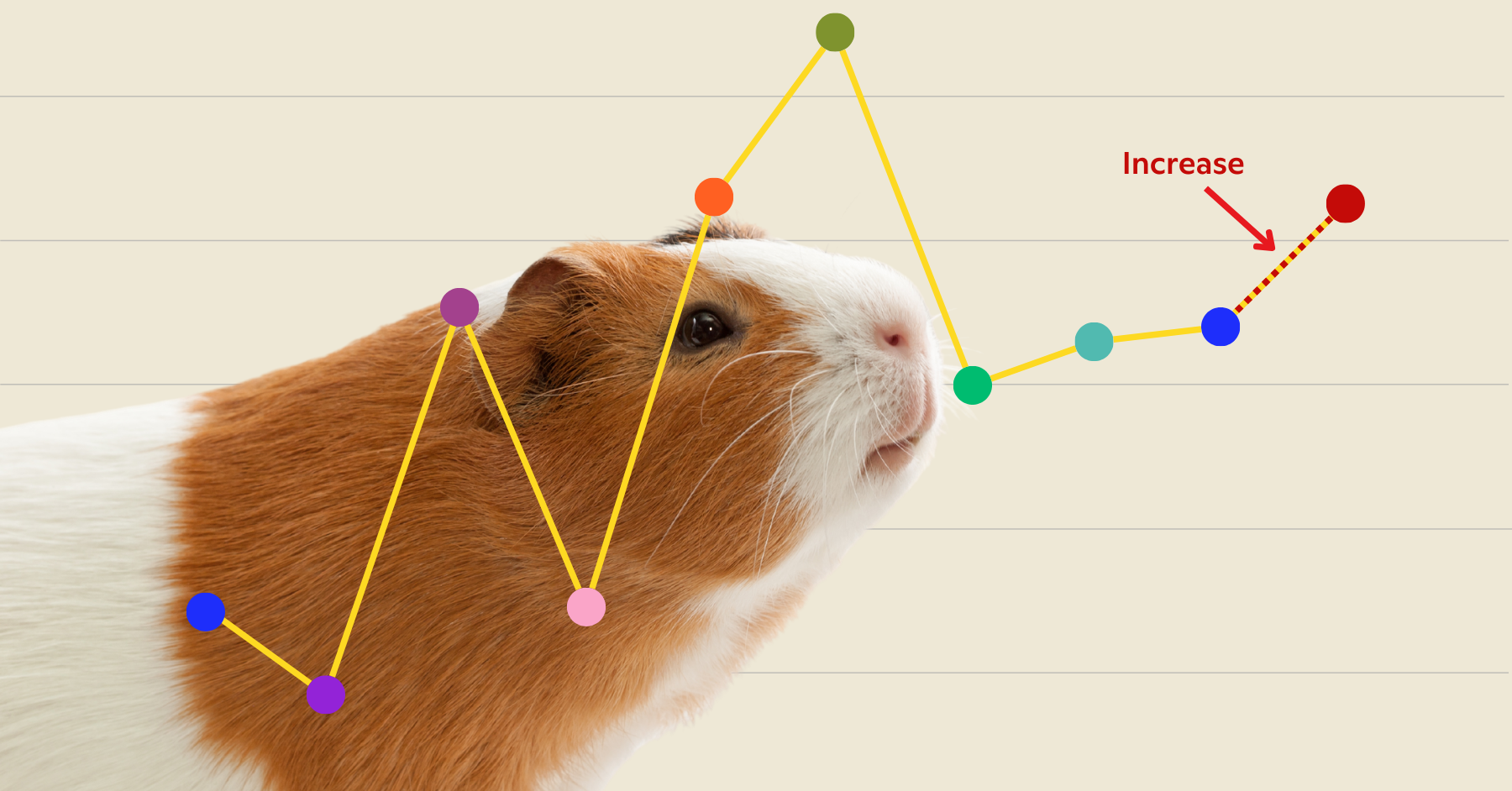
The USDA has finally released U.S. animal research facilities’ 2023 Annual Reports, and Rise for Animals has compiled all the data. Here’s what you need to know:
1,048 animal research facilities reported exploiting 1,609,186 animals in 2023. (Because the USDA requires laboratories to report their use of certain warm-blooded animals only, the USDA’s Animal Reports are estimated to account for only about 1% of the animals exploited by and in laboratories.)

Despite the passage of the FDA Modernization Act in 2022 and the ever-increasing promise of human-relevant science, the number of animals reported by animal research facilities in 2023 was significantly higher than in 2022. The total victim toll climbed by at least 169,758 (almost 12%), further closing the gap between pre- and post-COVID animal use.

The 2023 increase was driven by greater exploitation across all use categories and greater exploitation of guinea pigs, farmed animals, and “other” animals (including ferrets, cows, alpacas, coyotes, seals, bears, bats, and countless more).


The increase in guinea pig exploitation stemmed from significant climbs in their use for painful experiments. Labs reported a 80.7% increase in painful experiments for which some pain relief was provided and a 21.1% increase in painful experiments for which no pain relief was provided.

Though fewer total dogs were reported, labs used significantly more dogs for breeding and for painful experiments. At the same time that 1.9% (909) fewer dogs were reported overall, the number of dogs used for breeding more than doubled (from 2,256 to 4,889), and the number of dogs used in painful experiments for which no pain relief was provided increased by 20% (from 375 to 450).

Though fewer nonhuman primates were reported, more primates were exploited in painful experiments. While 5.1% (5,769) fewer primates were reported overall, almost 30% (274) more primates were used in painful experiments for which no pain relief was provided increased

We should not take this update as a reason to doubt the efficacy of our efforts — indeed, the increasing scrutiny of vivisection, recent (and novel) legislation, and the expansion of ethical, human-relevant science speaks to our progress.
Rather, we must recognize (and, indeed, expect) that as we gain ground against this devastatingly exploitative industry, the industry will fight back (i.e., cling to an indefensible and ever more embattled practice for its own self-preservation) — including by flexing its proverbial we-can-hurt-whoever-we-want-however-we-want muscle.
So, let us not be dissuaded by this data; let us be inspired to continue fighting, and, together, let us continue rising for the animals.
Save animals and support human-relevant science now. Urge your U.S. Representative to support the FDA Modernization Act 3.0, a bill that aims to revise FDA regulations by removing the requirement for animal research.
Share this article on Facebook or X (Twitter) now.